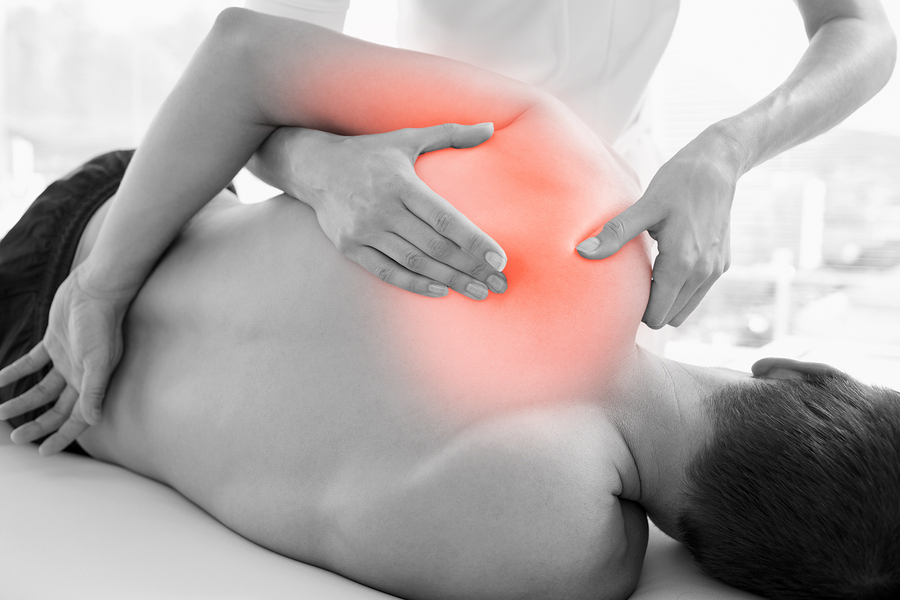The Truth About Chronic Pain
/By Dr. Rachel Zoffness, PNN Columnist
I’ve never been an athlete, but I’ve always loved exercising because of how it makes me feel. One beautiful spring day, I went for a run. On the way downhill, I was stopped by a sudden pain in my knee. When I woke the next morning, I couldn’t step out of bed without burning pain radiating from my feet, up my leg and into my hip.
I was couch-bound for the better part of a year. I saw countless doctors, was prescribed many medications, and would’ve done anything to stop the pain. That was the beginning of a decade-long journey with chronic pain.
I’ve dedicated my life to understanding pain, and not just because of that injury.
I’m a pain psychologist and assistant clinical professor at UC San Francisco School of Medicine, where I teach pain neuroscience to medical residents. I also founded a private practice dedicated to people living with chronic pain.
One of my earliest patients was a teenager. He’d been bedridden with multiple medical diagnoses for four years, seen 12 physicians and tried 40 medications. But nothing worked.
Not surprisingly, he was depressed and anxious. He had no life, no friends and no hope.
DR. RACHEL ZOFFNESS
As a pain psychologist, I use cognitive behavioral therapy (CBT) as one of my primary treatment tools, so we started a CBT-for-pain program. In addition to other strategies, it involved “pacing” or resuming select activities one small step at a time.
It was hard work, but little by little, he got healthier. As his functioning and mood improved, his pain did, too. Within 6 months he resumed school and rejoined his soccer team. His pain wasn’t gone – but it was significantly reduced and he knew how to manage it. He says pain will never control his life again.
Many of us have noticed this link between how we feel emotionally and how we feel physically. That’s because pain is never purely physical. This is confirmed by neuroscience research indicating that pain is produced by multiple parts of the brain, including the cerebral cortex (responsible for thoughts), prefrontal cortex (which regulates attentional processes), and the limbic system – your brain’s emotion center.
Dialing Back Pain
Imagine that you have a “pain dial” in your central nervous system that controls pain intensity. The function of this dial is to protect you from danger or harm. It can be turned up or turned down by many factors, including:
Stress and anxiety
Mood
Attention (what you’re focusing on)
When you’re feeling stressed and anxious – your thoughts are worried, your muscles are tense and tight, and the pain volume is turned up.
When your mood is low, you’re miserable and depressed, and your brain similarly amplifies pain volume.
This is also true when your attention is focused on pain. When you’ve stopped going to work, seeing friends and engaging in hobbies, your prefrontal cortex (which controls attention) sends a message to your pain dial, turning it way up.
However, the opposite is also true.
When stress and anxiety are low – your body is relaxed, your thoughts are calm and you’re feeling safe. Your cerebral cortex and limbic system send messages to your pain dial, lowering the volume so that pain feels less bad.
When your mood is high, your thoughts are positive, you’re feeling happy and you’re engaged in pleasurable activities. Your brain determines that little protection is needed, so pain volume is reduced.
And finally, when you’re distracted – you’re absorbed in activities, like watching funny movies with friends. The pain dial is turned down, so pain is less bad.
In summary, when you’re relaxed, happy, distracted, and feeling safe, your pain volume is lower. The pain is still there -- it hasn’t magically disappeared -- but it’s quieter. Softer. Less.
The truth about chronic pain is this: Your thoughts, beliefs, emotions and attention can all adjust pain volume.
This does not mean that pain is “all in your head.” It isn’t. Your pain is real, as real as mine, and no one should ever tell us otherwise. It does mean that there are many ways to change pain. One is medication. Multiple medications have been shown to effectively turn down the pain dial.
There are other methods for lowering pain volume, too. CBT, mindfulness and biofeedback are three biobehavioral approaches to pain management that research suggests can be helpful. They aren’t magic cures and they take time. But if you’ve never tried to manage your pain with these techniques, consider them. They’ve helped me immensely on my chronic pain journey.
When I was learning about mindfulness, I remember thinking, “What could mindfulness possibly have to do with physical pain?”
And then something fascinating happened.
During the first year of my practice, my pain changed. It didn’t go away entirely and I wasn’t cured. But the pain changed. It became less intense, less frequent, less distracting, and got less in the way of the rest of my life.
Rachel Zoffness, PhD, is a pain psychologist and assistant clinical professor at the UCSF School of Medicine. Rachel serves on the Steering Committee of the American Association of Pain Psychology, where she founded the Pediatric Division. She is the author of The Chronic Pain and Illness Workbook for Teens. You can find Rachel on Twitter @DrZoffness.















